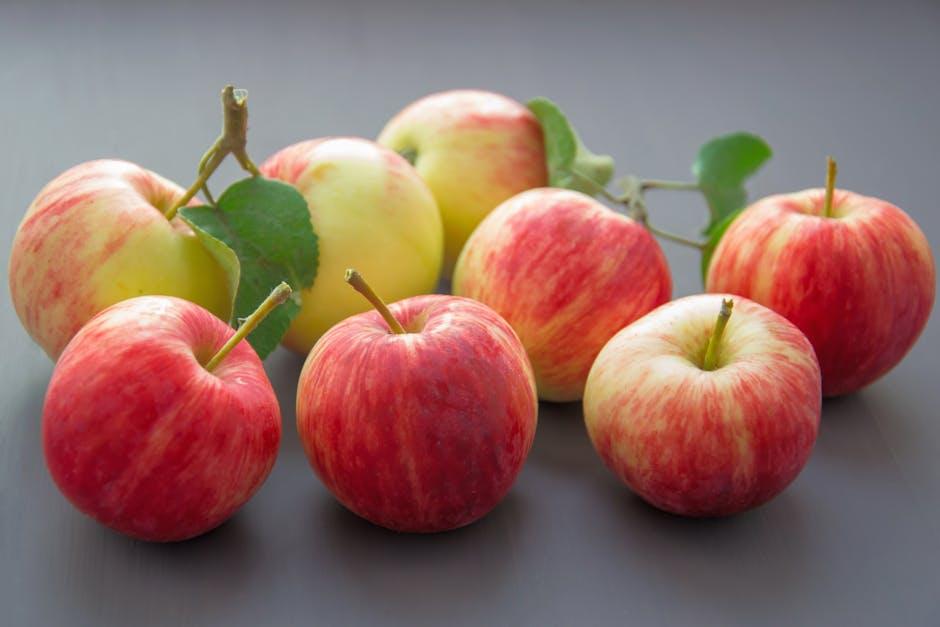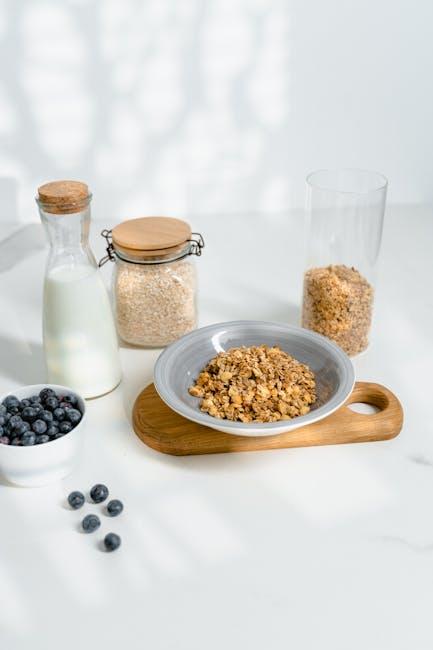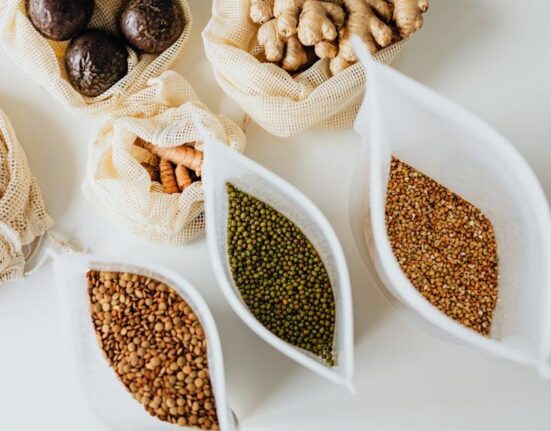In a world where convenience often trumps nutrition, processed ingredients have quietly crept into our daily meals, offering ease but sometimes at the expense of health. Yet, embracing a wholesome lifestyle doesn’t mean sacrificing flavor or simplicity. By making mindful swaps—turning to natural, nutrient-rich alternatives—we can transform familiar recipes into nourishing delights. This article explores creative and approachable healthy swaps for processed ingredients, inviting you to rethink what’s on your plate and rediscover the joy of eating well, one simple substitution at a time.
Table of Contents
- Rethinking Common Processed Ingredients for Better Nutrition
- Natural Alternatives That Boost Flavor and Health
- Smart Substitutions for Refined Sugars and Artificial Sweeteners
- Incorporating Whole Foods to Replace Preservatives and Additives
- Tips for Seamless Swaps in Everyday Cooking and Baking
- Q&A
- Insights and Conclusions

Rethinking Common Processed Ingredients for Better Nutrition
Processed ingredients often sneak into our meals disguised as convenient, time-saving shortcuts, but they can carry hidden nutritional tolls. Instead of reaching for refined sugars, unhealthy fats, or artificial additives, consider these wholesome alternatives that pack both flavor and nourishment. Swap white sugar for natural sweeteners like honey, maple syrup, or mashed bananas—each offering unique antioxidants and vitamins. Replace salt with herbs, spices, or citrus zest to elevate dishes without compromising heart health. Additionally, opting for whole-grain flours over all-purpose varieties can boost fiber and minerals, turning your recipes into truly satisfying, energizing meals.
- Refined sugar → Raw honey, maple syrup, mashed banana
- Vegetable oils → Avocado oil, extra virgin olive oil, coconut oil
- All-purpose flour → Whole wheat, almond, oat flour
- Artificial flavorings → Fresh herbs, spices, vanilla beans
Incorporating these simple swaps not only reduces the chemical load on your body but also enriches your diet with natural compounds that support overall wellness. For a quick comparison, here’s how these swaps affect key nutritional points:
| Ingredient | Processed Version | Natural Swap | Nutrition Benefit |
|---|---|---|---|
| Sweetener | Refined Sugar | Raw Honey | Antioxidants, vitamins |
| Oil | Vegetable Oil | Avocado Oil | Healthy monounsaturated fats |
| Flour | All-Purpose Flour | Whole Wheat Flour | High fiber, minerals |

Natural Alternatives That Boost Flavor and Health
Elevate your dishes by choosing ingredients that are as nourishing as they are flavorful. Fresh herbs like basil, cilantro, and rosemary not only enhance taste but also pack a punch of antioxidants and essential oils that support digestion and immunity. Swapping refined sugars with natural sweeteners such as honey, maple syrup, or mashed bananas adds a subtle, complex sweetness without the harmful spike in blood sugar. Incorporating whole grains like quinoa or farro instead of processed white rice not only diversifies texture but also offers a wealth of fiber, vitamins, and minerals to fuel your body sustainably.
For those creamy textures often sought in sauces and dressings, consider using avocado or Greek yogurt as wholesome alternatives to heavy creams or mayonnaise. These options bring healthy fats and probiotics, which aid gut health and keep skin glowing. Additionally, nuts and seeds can replace crunchy processed toppings, contributing heart-healthy fats and a satisfying crunch without the artificial additives. Experimenting with these swaps can transform ordinary recipes into vibrant, healthful meals that delight the palate and nourish your well-being.
| Processed Ingredient | Natural Alternative | Health Benefit |
|---|---|---|
| Refined Sugar | Honey / Maple Syrup | Lower glycemic index, antioxidants |
| Mayonnaise | Greek Yogurt / Avocado | Probiotics, healthy fats |
| White Rice | Quinoa / Farro | High fiber, protein-rich |
| Artificial Seasonings | Fresh Herbs & Spices | Antioxidants, improved digestion |

Smart Substitutions for Refined Sugars and Artificial Sweeteners
When it comes to sweetening your meals without the drawbacks of refined sugars or artificial sweeteners, nature offers a bounty of alternatives that are both tasty and nourishing. Ingredients like raw honey, maple syrup, and date paste not only impart a wholesome sweetness but also contribute trace minerals and antioxidants, enhancing flavor depth and nutritional value. For a low-glycemic touch, stevia and monk fruit extracts provide sweetness without spiking blood sugar levels, making them ideal for those mindful of their glycemic load.
Experimenting with these sweet substitutions is easier when you understand their unique characteristics. Below is a simple guide to help you choose and measure these alternatives for common sugar replacements, perfect for baking or sweetening beverages:
| Sweetener | Sweetness Level vs. Sugar | Measurement Replacement | Flavor Notes |
|---|---|---|---|
| Raw Honey | 1.0x | Use 3/4 cup per 1 cup sugar (reduce liquids) | Floral and rich |
| Maple Syrup | 1.0x | Use 3/4 cup per 1 cup sugar (reduce liquids) | Warm, caramel-like |
| Date Paste | 1.0x | 1:1 ratio | Sweet, fruity |
| Stevia | 200x+ | Use sparingly (check brand specifics) | Sweet with slight bitterness |
| Monk Fruit | 150x | Use sparingly (brand instructions) | Clean, sweet |

Incorporating Whole Foods to Replace Preservatives and Additives
Swapping out preservatives and additives for whole foods is a powerful way to reclaim the purity of your meals. Natural ingredients like fresh herbs, citrus zest, and vinegars not only enhance flavor but also offer antioxidant and antibacterial properties, which can extend shelf life without the need for synthetic chemicals. Incorporating whole foods like nuts, seeds, and fresh vegetables into recipes brings texture, nutrients, and natural moisture, reducing reliance on emulsifiers and stabilizers commonly found in processed products.
Consider the following natural substitutions that lend both health benefits and culinary depth:
- Whole spices instead of flavor enhancers
- Natural sweeteners such as honey or maple syrup over artificial sweeteners
- Fresh fruit purees replacing artificial thickeners and colorants
- Greek yogurt or avocado as creamy bases instead of processed fats
| Processed Ingredient | Whole Food Alternative | Benefit |
|---|---|---|
| Artificial Preservatives | Rosemary Extract | Natural antioxidant & shelf-life extender |
| Monosodium Glutamate (MSG) | Smoked Paprika | Rich umami flavor without additives |
| Artificial Colorants | Beetroot Powder | Vibrant color + nutrients |

Tips for Seamless Swaps in Everyday Cooking and Baking
Mastering the art of ingredient swaps starts with understanding the role each processed item plays in your recipes. For example, replacing refined sugars with natural sweeteners like honey or maple syrup not only enriches flavor but also infuses your dishes with beneficial nutrients. Likewise, when substituting flours, choosing almond or oat flour can add texture and moisture while boosting fiber and protein content. Remember, small tweaks such as incorporating mashed avocado or Greek yogurt in place of butter can enhance moisture without sacrificing richness.
To make your culinary transitions effortless, consider these practical swap strategies:
- Adjust liquid ratios: Natural sweeteners and alternative flours might require slight tweaks in wet ingredients to maintain the perfect consistency.
- Experiment with spice and herb blends: They can heighten flavor profiles and offset any subtle changes introduced by ingredient swaps.
- Keep notes: Document your tweaks and results to refine each recipe to your taste and texture preferences.
| Processed Ingredient | Healthy Swap | Notes |
|---|---|---|
| White Sugar | Maple Syrup | Use ¾ cup for every cup of sugar |
| All-Purpose Flour | Almond Flour | Great for moisture, reduces gluten |
| Butter | Mashed Avocado | Adds healthy fats, creamy texture |
| Sour Cream | Greek Yogurt | Boosts protein, tangy flavor |
Q&A
Q: What are “healthy swaps” for processed ingredients?
A: Healthy swaps involve replacing commonly used processed ingredients with more natural, nutrient-rich alternatives that provide similar flavors or textures but with fewer additives, preservatives, and unhealthy fats or sugars.
Q: Why should I consider swapping out processed ingredients?
A: Processed ingredients often contain excess salt, sugar, unhealthy fats, and artificial chemicals that can negatively impact your health. Choosing whole, less processed options can lead to better digestion, improved energy, and overall well-being.
Q: Can you give examples of processed ingredients and their healthier alternatives?
A: Absolutely! Instead of white refined sugar, try natural sweeteners like honey, maple syrup, or mashed dates. Swap out white flour for whole wheat or oat flour. Replace store-bought salad dressings with homemade vinaigrettes made from olive oil and lemon juice. Use Greek yogurt instead of sour cream for creaminess with protein.
Q: How do these swaps affect the taste and texture of recipes?
A: While some swaps may slightly alter flavor or texture, they often add depth and complexity. For example, using avocado instead of mayonnaise lends a creamy texture and subtle nutty taste. Experimenting with spices and herbs can also enhance flavors to compensate for any differences.
Q: Are healthy swaps more expensive or time-consuming?
A: Initially, some whole-food ingredients may cost a bit more, but they often last longer and offer greater nutritional value. Preparing homemade alternatives might take a little extra time but also gives control over ingredients and reduces reliance on packaged goods.
Q: How can I start incorporating healthy swaps into my daily cooking?
A: Start small. Replace one processed ingredient at a time and observe how it affects your dishes. Gradually experiment with different alternatives, focusing on your favorite recipes. Over time, these swaps become natural parts of your cooking routine.
Q: Do healthy swaps work for all types of processed ingredients?
A: While many processed ingredients have great natural substitutes, some ultra-processed items like certain ready-made sauces or snacks might be harder to replicate exactly. Focus on replacing core ingredients first—grains, sweeteners, fats—and aim to cook more meals from scratch.
Q: Can healthy swaps help with specific dietary needs?
A: Yes! Healthy swaps can be customized to fit vegan, gluten-free, low-sugar, or heart-healthy diets. For instance, using coconut aminos instead of soy sauce reduces sodium for those watching salt intake, or substituting flaxseed eggs for real eggs supports plant-based nutrition.
Q: What’s the key takeaway when making healthy swaps?
A: The goal is balance and mindfulness, not perfection. Swapping processed ingredients with healthier options enhances the nutritional quality of your food without sacrificing enjoyment. It’s about creating nourishing meals that support your well-being in a sustainable, enjoyable way.
Insights and Conclusions
Embracing healthy swaps for processed ingredients is more than just a trend—it’s a simple step toward nourishing your body with wholesome, natural goodness. By making mindful choices in the kitchen, you can transform everyday meals into vibrant, nutrient-rich experiences without sacrificing flavor or convenience. Remember, every small change adds up, turning your culinary routine into a celebration of health and vitality. So, next time you reach for that processed ingredient, pause and consider the fresh, healthful alternative waiting to elevate your dish—and your well-being.













Leave feedback about this